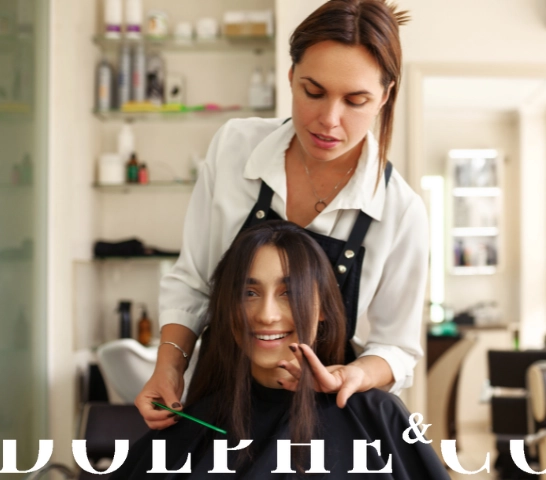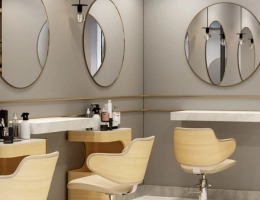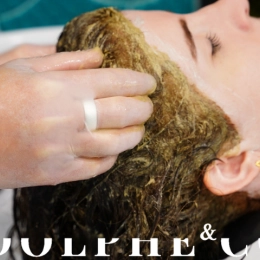In a context of increasing competition and growing client expectations, hair salons must stand out with more than just technical skills. Customer experience, the quality of advice, and personalisation have become powerful tools for client loyalty.
This article offers practical advice for hair salons and can be consulted on the brand's or salon's website.
What if it all started with a perfectly executed hair diagnosis?
Too often overlooked or improvised, the hair diagnosis — a true in-depth assessment of hair health — should be a key element of your personalised and customisable service offer. It’s an essential tool for building trust and loyalty with your clients.
It structures the client relationship, helps build tailored solutions adapted to real needs, while showcasing your expertise and strengthening the bond of trust with your clients.
Let’s explore how to naturally incorporate this diagnosis into your salon routine with method and efficiency.
Why integrate a hair diagnosis into your salon routine?
In many salons, the diagnosis is still seen as a quick step, limited to a few questions at the shampoo station. However, a structured, professional, and regular hair diagnosis allows you to identify specific client concerns, assess the condition of the hair and scalp, and adapt the treatment accordingly. It’s much more than just a quick conversation.
1) Strengthen the client relationship through listening and personalisation
From the very first minutes, a well-conducted diagnosis helps establish a climate of trust. By asking the right questions and, above all, taking the time to truly listen to your client, you send a strong message: “I care about your hair, your habits, and your unique needs.”
As a result, the client feels valued, understood, and engaged in the service. They are no longer just “getting their hair done”: they’re experiencing a personalised session.
This bond of trust is the first driver of client loyalty. A client who feels listened to is more likely to return... and to recommend you.
2) Identify real needs beyond appearances
Many clients arrive with preconceived notions (“my hair is dry”, “my ends are damaged”), but only a professional assessment and a few simple tests (porosity, density, scalp condition) will reveal the true hair concerns.
Hair loss, for instance, is a common issue that can be identified through a proper diagnosis.
By conducting a precise diagnosis, you avoid errors in care or product choices, improve your efficiency, and increase client satisfaction.
3) Legitimize your recommendations and professional expertise
In a sales approach that’s too direct, product recommendations may come off as pushy. In contrast, when they follow a professional diagnosis, they feel natural and expected.
“Following the analysis of your scalp, I recommend this regulating lotion. It will soothe irritation and rebalance sebum production.”
Recommending a recognised routine and a carefully selected product range tailored to each hair type strengthens the client’s trust in your advice and underscores the quality of your service.
This shift changes your position — you’re no longer just a seller, but a trusted expert advisor. And your recommendations gain credibility.
4) Add value to your consultation time (and increase your average basket)
A well-structured hair diagnosis can become a full-fledged service, integrated into your offering.
It can be offered free for a first visit, included in “hair assessment + personalised care” packages, or charged as part of a specific consultation.
Not only does this increase the perceived value of your time with the client, but it also boosts your opportunities for consultative selling.
A well-diagnosed client will be more likely to purchase tailored products and treatments.
The key steps to a custom hair diagnosis
An effective diagnosis follows a simple structure that can be applied by your entire team, while being adapted to each client.
Hair diagnoses can be booked by appointment to offer a truly personalised and in-depth experience to every client.
We break the diagnosis down into three main phases: 1. The conversation 2. Visual expertise 3. Technical expertise
1. Conversation: active listening and lifestyle insights
Start the appointment by asking targeted questions about the client’s lifestyle, family history, hair care routine, and products used.
The hair diagnosis takes into account both the lifestyle and scalp health, and applies to all clients — men and women alike.
This information is key to building a complete and relevant diagnosis, while also learning more about your client’s expectations.
2. Visual observation: analyse the hair and scalp
Carefully observe the overall condition of the hair and scalp:
– Texture, shine, presence of residues
– Irritations, dandruff, excess oil
– Colour uniformity, condition of the ends
– Close inspection of roots and lengths to evaluate their health and specific needs
Based on this visual analysis, you can recommend a suitable product line that meets the client’s identified needs, from roots to lengths.
3. Technical tests: validate your assessment with simple gestures
From the first moment of the appointment, ensure you establish a climate of trust and clearly explain how the diagnosis will proceed.
Perform a few simple technical gestures:
– Porosity test
– Elasticity assessment
– Density analysis
Once the diagnosis is complete, keep the results recorded to enable consistent follow-up. This shows your professionalism and allows you to customise future sessions.
Following the technical assessment, offer a tailored selection of care products, carefully chosen to meet the client’s specific needs as identified during the diagnosis.
If you'd like to know more, we invite you to read our next article: “How to Boost Your Sales with Expert Advice in the Salon”
Explore the essential tools to refine your diagnosis
To further enhance your hair assessments, several tools have become essential for professionals. Devices that measure hair texture and strength help assess fibre resilience and anticipate breakage risks.
Digital microscopes offer a detailed view of the scalp and hair roots, revealing elements invisible to the naked eye, such as micro-irritations or product build-up. Finally, specialised software compiles and analyses results, making it easier to create a personalised care routine tailored to each hair profile.
These tools provide accurate insights into the condition of the hair, roots, and scalp — enabling more targeted recommendations and maximising the effectiveness of your in-salon treatments.
A powerful tool for customer loyalty
Integrating a custom hair diagnosis into your salon services isn’t just a bonus — it’s a strategic asset that positions your business as professional, attentive, and expert.
This approach helps:
- Strengthen the client relationship through authentic, personalised interaction from the start of the session,
- Legitimise your recommendations through tangible, expert-backed insights,
- Showcase your expertise by demonstrating that every recommendation is based on a professional assessment,
- Improve your business profitability by increasing the sale of targeted products and care treatments.
Moreover, the hair diagnosis enables precise customisation of treatments for every hair type — straight, wavy, curly or coily — ensuring truly individualised care.
At Rodolphe & Co, we believe the future of hairdressing lies in more conscious, respectful, and personalised practices. And it all starts with a simple yet essential gesture: listening to the hair before styling it.
Each diagnosis brings a tailored solution to your client’s unique needs, taking into account both their hair type and scalp condition.
To conclude, remember that offering a custom hair diagnosis is not just a mark of professionalism — it’s a powerful opportunity to build lasting, trusting relationships with your clients.





